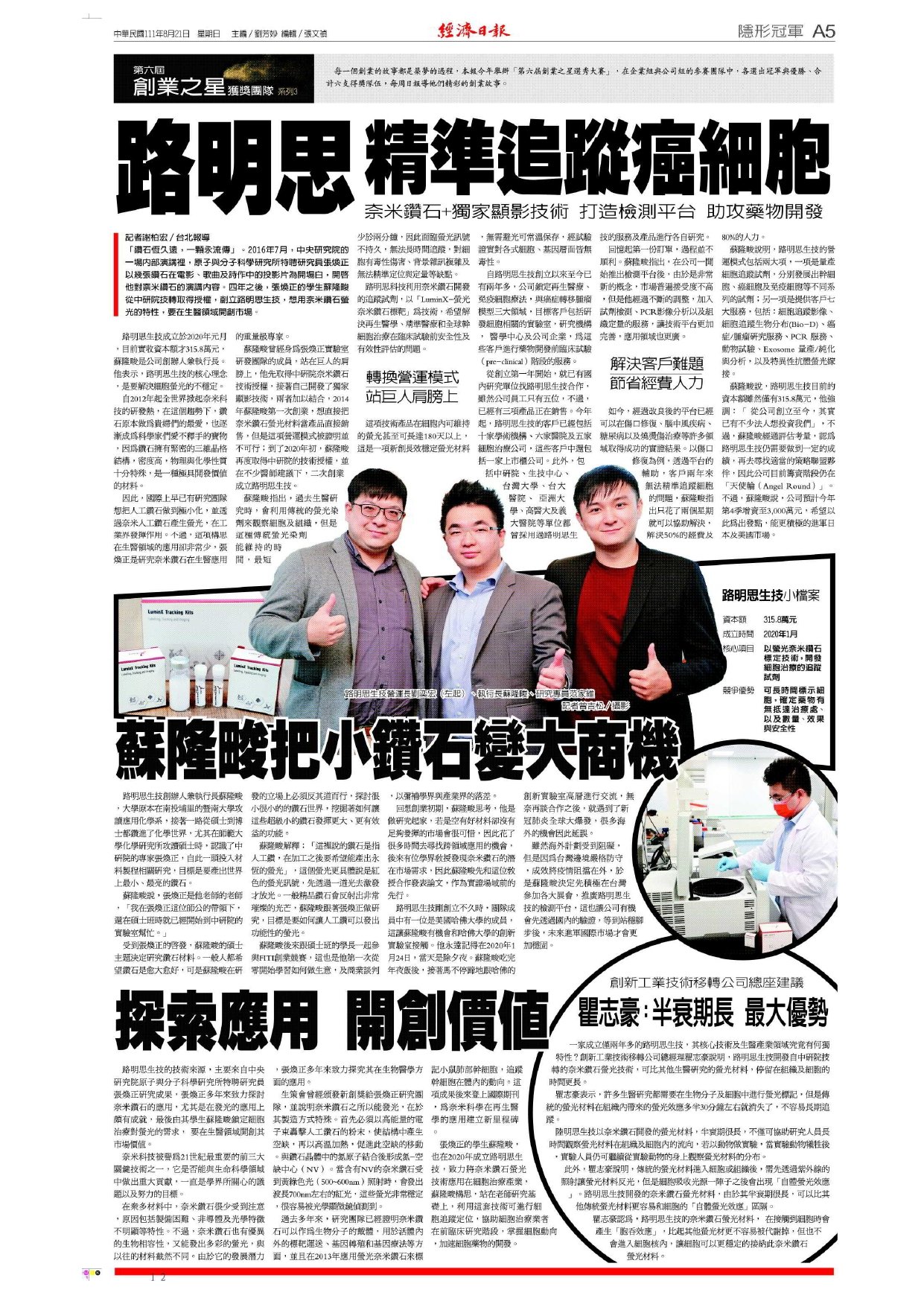Full article in Economic Times "LuminX accurately tracks cancer cells"
After several interviews and photo shoots, the article was finally published at the end of August.T
he following is an excerpt from the report
"Inspired by Wenzheng Zhang, Mr. Su decided to study diamond materials for his master's degree. While most people want diamonds to be as big as possible, Su's position in research and development is to go the other way, exploring the tiny world of diamonds and how to make these super small diamonds work in a big and more efficient way. The fluorescence is more specifically a red fluorescent signal, which is first stimulated by a light before it is emitted.
The goal of the research with Professor Woon Jung Chang was to make the artificial diamond emit a functional fluorescence. Later, Su participated in the FITI Entrepreneurship Competition with his master classmates, which was also the first time he learned how to do business and negotiate from scratch to bridge the gap between academia and industry. He spent a lot of time looking for opportunities for cross-disciplinary applications, and then an academic professor discovered the potential market demand for nanodiamonds, so Sue collaborated with several professors to publish a paper as a precursor to the field of demonstration.
The source of LuminX technology comes from the research results of Wenzheng Zhang, a special researcher at the Institute of Atomic and Molecular Sciences, Academia Sinica. Wenzheng Zhang has been exploring the application of nanodiamonds for years, especially in the application of fluorescence. Nanotechnology is regarded as one of the top three key technologies of the 21st century, and whether it can make a significant contribution to the field of life science has always been an issue of interest and a goal for the academic community. Among the many materials, nanodiamonds have received little attention because of their difficult preparation, non-conductivity, and obscure optical characteristics. However, nanodiamonds also have excellent bio-phase properties and emit colorful fluorescence, which is very different from previous materials. Because of its development potential, Mr. Chang has been exploring its biomedical applications for many years.




 02-26558597
02-26558597